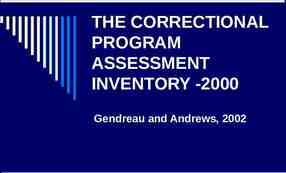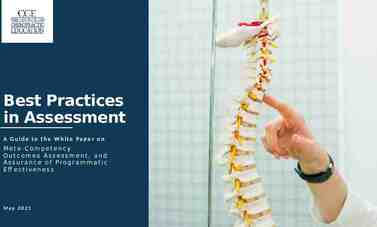Can we prevent infection after an exposure? The world of
31 Slides1.78 MB
Can we prevent infection after an exposure? The world of post-exposure prophylaxis (PEP) James Wilton Project Coordinator Biomedical Science of HIV Prevention [email protected] 1
2 HIV/AIDS in Canada Number of people living with HIV 57,000 in 2005 65,000 in 2008 2,200 to 4,200 infected in 2005 2,300 to 4,300 infected in 2008 MSM (44%) People who use injection drugs (17%) Women (26%) Aboriginal (12.5%) Source: Public Health Agency of Canada 2
3 Improving HIV prevention 1. Do better with the strategies that we already have 2. Develop new biomedical technologies to prevent HIV
What is post-exposure prophylaxis (PEP)? Post After Exposure When a fluid containing HIV comes into contact with mucous membranes or non-intact skin Prophylaxis An action taken to prevent infection or disease
What is PEP to prevent HIV infection? The use of a combination of antiretrovirals by HIVnegative individuals for a short period of time after a suspected or known exposure to HIV Must be started as soon as possible but within 48-72 hours after the exposure Must be taken everyday for 28 days Must avoid additional exposures while taking PEP Types of exposures Occupational Non-occupational 5
Occupational vs. non-occupational exposures Occupational Work-related exposures to HIV Needle-stick injuries Sharp objects “Standard of care” Non-occupational (nPEP) Exposures outside of the workplace Non-consensual sex Consensual sex Needle sharing Not “standard of care” 6
Does PEP work? No randomized controlled studies Observational studies Studies with control groups Evaluations of PEP programs Indirect evidence Non-human primate (monkey) studies Prevention of mother-to-child transmission 7
How does PEP work? Infection does not occur instantly after an exposure to HIV The virus needs to spread throughout the body This may take up to 3 days after the exposure The “window of opportunity” for PEP The brief period of time - after an exposure - where infection has not yet occurred During this time, PEP may be able to stop HIV from causing an infection 8
How well does PEP work? We don’t know how protective PEP is We know it is not 100% protective People have become infected despite using PEP Protection likely depends on: Starting PEP quickly Being adherent The risk of transmission from the exposure Avoiding additional exposures The number and type of antiretrovirals used 9
Does occupational PEP work? Study details 712 healthcare workers exposed to HIV-infected blood Study findings 256 did use PEP – 9 became infected 456 did not use PEP – 24 became infected PEP reduced the risk of HIV transmission by 81% 10
Does non-occupational PEP work? Study details 200 gay men in Brazil given a 4-day starter-pack of PEP Followed for over 2 years Study findings 68 men did use PEP after a high risk exposure – 1 became infected 86 men did not use PEP after a high risk exposure – 10 became infected Study did not calculate effectiveness of nPEP 11
Failure of nPEP to prevent infection is rare # People who used nPEP # HIV infections Amsterdam 261 5 France 776 1 Denmark 374 1 Australia 1552 0 Switzerland 710 0 San Francisco 702 6 It Montreal is difficult to interpret 900 how protective PEP is 6 Would people have remained uninfected without using PEP? Among those who became infected, was PEP used correctly? 12
What’s involved in taking PEP? 1. Assessment 2. Counseling 3. Prescription 4. Follow-up 13
What’s involved in taking PEP? 1. Assessment Was the exposure within the last 72 hours? Is the exposed person HIV-negative? Was the exposure high-risk? What activity led to the exposure? What was the HIV status of the source person? 2. Counseling 3. Prescription 4. Follow-up 14
Guidelines for non-occupational PEP When is PEP recommended? Example, the CDC nPEP guidelines Is there a substantial risk from the activity? – No PEP not recommended If yes, was the exposure to someone who was HIV-positive? – No PEP not recommended – Unknown Case-by-case basis – Yes PEP recommended 15
What’s involved in taking PEP? 1. Assessment 2. Counseling What are the risks and benefits of starting PEP? Is the exposed person ready to start PEP? Adherence and risk-reduction counseling 3. Prescription 4. Follow-up 16
What’s involved in taking PEP? 1. Assessment 2. Counseling 3. Prescription What antiretrovirals? How many? Starter-packs 4. Follow-up 17
Guidelines for non-occupational PEP USA Australia WHO Timing of PEP Within 72 hours Number of antiretrovirals 2 or 3 What antiretrovirals ? Two NRTIs Two NRTIs PI/NNRTI Two NRTIs tenofovir UK Europe Within 48 hours 3 Two NRTIs Two NRTIs PI Duration Truvada Kaletra 28 days Barber and Benn 2010 NRTI nucleoside reverse transcriptase inhibitor NNRTI non-nucleoside reverse transcriptase inhibitor PI protease inhibitor Truvada tenofovir emtricitabine 18
What’s involved in taking PEP? 1. Assessment 2. Counseling 3. Prescription 4. Follow-up Ongoing risk-reduction and adherence counseling Monitoring/management of side-effects and toxicity HIV testing 19
Why do so few people use nPEP in Canada? People may not think they are at risk Lack of national and provincial guidelines Use of nPEP is not promoted Only available in some emergency departments and urgent care clinics Cost is only covered by some provincial and private insurance plans Side-effects, adherence, monitoring, counseling 20
Why is there reluctance to make nPEP more widely available? Feasibility Cost-effectiveness Risk compensation 21
Why is there reluctance to make nPEP more widely available? Feasibility Research suggests that nPEP programs are feasible but challenges exists Cost-effectiveness Research suggests that targeted nPEP programs are cost-effective Risk compensation Research shows that there is little evidence of risk compensation 22
Enhancing the potential benefit of PEP Access to PEP provides an opportunity to offer additional services to people at high risk of infection Research study Study details – In addition to PEP, participants received either: 1. Standard risk-reduction counseling (2-sessions) 2. Enhanced risk-reduction counseling (5-sessions) – Participants followed for a year after initiating PEP Study findings – Standard counseling 12.3% became infected – Enhanced counseling 2.4% became infected Combining PEP with enhanced risk-reduction counseling can make it a more effective prevention tool
A comprehensive approach to PEP Integration into a comprehensive prevention program Targeted outreach and educational campaigns Prevention, care and support services Adherence counseling and support Risk-reduction counseling Psychological counseling and trauma support Mental health and addiction services Advocacy to improve access 24
Clinique l’Actuel: 9 years experience with nPEP Sexual health clinic in Montreal, Quebec Over 1,139 consultations Prescribed to over 900 people Majority of PEP users are gay men 80% first time using PEP Average time to consultation after exposure - 29 hours Challenges 68% complained of side-effects 50% completed follow-up 6 HIV infections Many reported ongoing exposures 25
26
CATIE’s Programming Connection 27
CATIE Resources: PEP factsheet and article 28
29
30
Thank you!




































